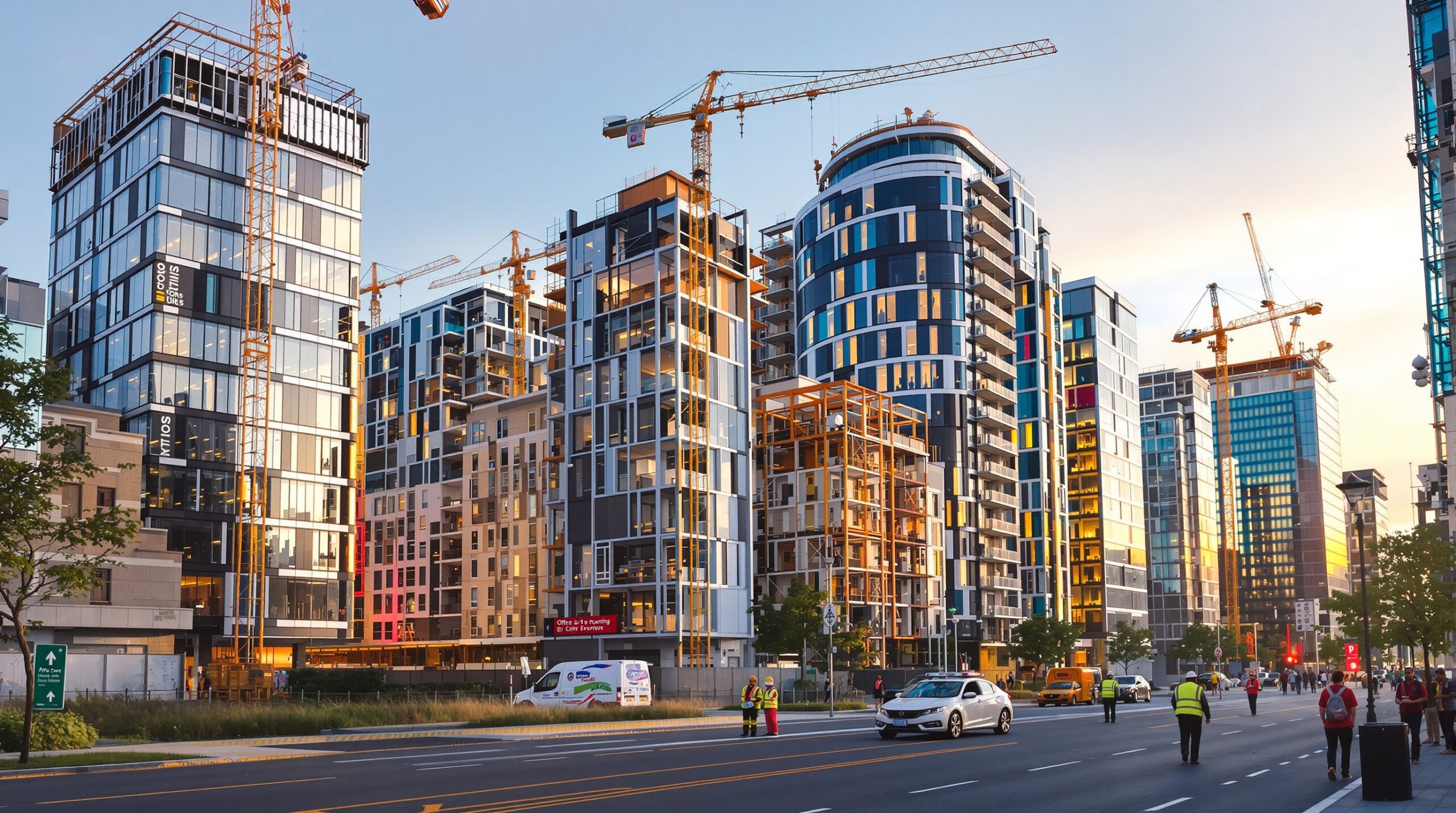The skyline of many global cities is undergoing a dramatic transformation. Empty office towers, once bustling with workers, now stand as silent reminders of a shifting economic landscape. With the rise of remote work, city leaders and developers face urgent decisions about how to repurpose these structures. Retrofitting aging office towers into residential housing is fast emerging as a viable solution.
The Office Space Surplus and Its Causes
The COVID-19 pandemic accelerated a decades-long trend toward flexible work schedules. Millions of employees now work partially or entirely from home. Many companies have reduced their office footprints, leaving once-coveted downtown real estate standing empty. This surplus impacts urban economies, with property values dropping and tax revenues falling. Unoccupied towers contribute to blight and reduce foot traffic for local businesses.
Various factors have contributed to the decline of traditional office spaces. Advances in technology make remote work possible for an increasing range of professions. Companies embrace flexible policies to attract top talent. Also, high property and lease costs in urban centers further discourage maintaining unused space. With vacant floors piling up, cities are under pressure to find creative uses for these towers.
Housing Shortages Spur Creative Solutions
At the same time, urban centers worldwide face persistent housing shortages. Rising populations and limited land availability make constructing new residences difficult and expensive. The mismatch between office vacancies and housing demand has become starkly apparent. With so much space sitting idle, conversion gives hope to those priced out of city living.
City governments and non-profit organizations are advocating for policies that encourage the reuse of existing office infrastructure. Repurposing old offices into apartments or condos can help rapidly increase housing stock. This solution promises to rejuvenate city centers while making them more accessible for diverse residents. For many cities, retrofitting offers a lifeline to both aging buildings and the people who need homes.
Challenges in Retrofitting Office Towers for Residential Use
The process of converting offices into homes is not without challenges. Many older buildings were designed with deep floor plates and limited access to natural light. Creating suitable residential layouts often requires extensive structural changes and new mechanical systems. Adding plumbing for kitchens and bathrooms on every floor can be technically complex and costly.
Zoning regulations and building codes present additional hurdles. Office buildings were designed for commercial standards, not for residential safety needs. Developers must adhere to strict guidelines on fire escapes, soundproofing, accessibility, and air quality. Securing permits can be time-consuming, delaying projects and increasing costs. Financial feasibility is also a major concern, as conversions may not always yield desired returns.
Innovative Projects Lead the Way
Despite obstacles, several cities are moving forward with conversion projects. In Calgary, Canada, city officials launched the Downtown Calgary Development Incentive Program. The initiative offers financial incentives to developers willing to transform office spaces into residences. By 2023, over one million square feet had been approved for conversion. Many believe these transformations are essential to reversing downtown decline.
New York City is another leader in adaptive reuse. The city’s “Office Adaptive Reuse Task Force” promotes streamlined regulatory frameworks for conversions. Several famous Manhattan skyscrapers have already undergone partial or total residential retrofits. These efforts highlight how adaptive reuse can revitalize neighborhoods, diversify housing options, and encourage new investment.
Meanwhile, cities like San Francisco and Washington, D.C., are also piloting projects despite technical and financial constraints. They demonstrate the potential scalability of office-to-residential conversions. Partnerships between public agencies, private investors, and non-profits are helping to overcome barriers and ensure affordability.
Sustainability and Social Benefits of Office-to-Housing Conversions
Retrofitting old offices offers substantial sustainability benefits. Constructing new apartment buildings often requires significant material and resource consumption. In contrast, adaptive reuse extends the lifespan of existing structures and reduces demolition waste.
Environmental experts note that reuse significantly lowers carbon emissions associated with new construction. Installing energy-efficient heating, cooling, and household systems improves building performance. These green upgrades align with municipal climate goals and provide healthier living conditions. Moreover, conversions can preserve architectural heritage by maintaining historic facades and unique design features.
The social impact is equally important. Mixed-income housing in urban cores ensures access to transit, jobs, and services for a broader population. Former commercial hubs become vibrant neighborhoods with schools, markets, and recreational spaces.
Affordability remains a challenge. However, many cities tie conversion incentives to requirements for below-market or subsidized units. By embracing inclusive development, municipalities can reduce housing inequality and generate more equitable cities.
Future Outlook and Urban Policy Shifts
Policymakers continue to explore new tools and frameworks to promote office-to-housing conversions. Streamlining approvals, updating zoning laws, and increasing financial support have proven effective. Several local governments now permit greater flexibility in building codes for qualified projects.
Public-private partnerships are playing an increasingly important role. Investors see opportunity in urban revitalization, especially in high-demand markets like Boston, Toronto, and London. Cross-sector collaboration enhances the ability to tackle complex regulatory and design challenges.
Experts predict the trend will accelerate as remote work becomes entrenched. Developers and civic leaders recognize that successful adaptation requires a holistic approach. This includes community input, sustainable building practices, and attention to cultural heritage.
Conclusion: A New Era for City Centers
As office attendance plateaus well below pre-pandemic levels, cities stand at a crossroads. The choice is to let towers decay or to give them new life. Converting empty offices into homes is both a practical and visionary response to changing urban needs.
The pace of retrofits will likely quicken as cities adapt policies and learn from early successes. Challenges remain, but creative solutions and strategic partnerships continue to emerge. With determination and innovation, urban skylines will evolve from symbols of past industry to vibrant and inclusive communities.


